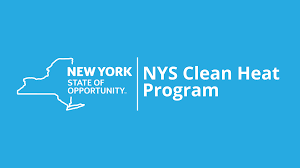Why Mini-Splits Heat Pumps Are Better Alternative Than Traditional Heaters?
- juliannem9
- Nov 3, 2023
- 2 min read
Updated: Jun 11, 2024
What Are Mini-Splits?
A mini-split is a type of heating, ventilation, and air conditioning (HVAC) system. As the name suggests, these systems are "split" into two components: an indoor handling unit (evaporator) and an outdoor compressor unit (condenser). Mini-splits are smaller and easier to install compared to traditional heating systems, making them ideal for both single-room, whole-home solutions and even for small businesses. There are different types of mini-splits, but ductless mini-split heat pumps are the most common as they provide year-round comfort by providing both heating and cooling capabilities.
How Do Mini-Splits Work?
During the hot summer months, refrigerants absorb heat inside the home and produce cold air by transferring it from an indoor unit to an outdoor unit, where heat is expelled.
In the winter, this process is reversed. The refrigerant absorbs heat from the outside and provides warmth by transferring it from the outdoor unit to the indoor unit.

Understanding the Heating Landscape in New York
Before diving into the advantages of mini-split heat pumps, let's consider the heating sources commonly used in New York. According to the Census Bureau, approximately 59.6% of housing units in New York use gas for heating, 12.9% use electricity, and a mere 0.1% harness solar energy for this purpose. These statistics demonstrate the predominance of conventional heating systems in the area.
Heating Systems: Comparative Overview
When it comes to heating your home, there are various options, but today we will mainly focus on 3 types: furnaces, boilers and heat pumps. It essential that we examine them:
Heating Systems | Furnace | Boilers | Heat Pumps |
Overview | A furnace uses warm air that circulates through the home to heat it. | A boiler uses hot water or steam to heat your home. | A heat pump uses refrigerant to cool and/or warm your home. |
How does it work? | 1.Fuel combustion or electric heating elements generate heat in a combustion chamber
2. This heat is transferred to a heat exchanger, heating it.
3. The heated air is forced into a network of ducts, which then distributes it to different rooms in your home. | 1.Heats water using gas, oil or electricity. 2. Heated water turns into steam or remains in liquid form, depending on the type of boiler. 3. The steam or hot water is sent through a system of radiators placed throughout the home to provide indoor heating. | 1.Heat from the outside air is absorbed by refrigerant in the outdoor unit. 2. Indoor unit releases heat into the house. |
Fuel |
|
|
|
Features |
|
|
|
Drawbacks |
|
|
|
Why Mini-Split Heat Pumps Outshine Other Heating Options
Energy and Cost Efficiency: Mini-splits heat pumps advanced technology and high SEER ratings ensure optimal performance while consuming less electricity, reducing utility bills, and minimizing environmental impact.
Customizable Indoor Comfort: Each indoor unit can be controlled independently allowing you to customize the temperature in different rooms to suit individual preferences.
Easy Installation: Ductless mini-splits heat pumps are easier to install than traditional conventional and HVAC systems. They also do not require ductworks.
Compact Design: The compact design of mini-splits ensures they won't take up much space in your home. Ductless mini-splits eliminate the need for ductwork, which can be expensive to install and maintain.
Air Quality: Mini-splits heat pumps come equipped with air filters that help remove airborne particles such as dust, pollen, and other allergens.
Final thoughts...
Mini-split heat pumps emerge as superior alternatives to traditional heating systems, particularly in New York City with its limited space and varying climate. Their energy efficiency, year-round capabilities, zoned control, compact design, and improved air quality attributes make them well-suited for apartments and small businesses, ensuring cost savings, personalized comfort, and a healthier indoor environment. The practicality of ductless operation, ease of installation, and potential financial incentives further reinforce their appeal, ultimately positioning mini-split heat pumps as a modern, efficient, and versatile choice for year-round climate control in the bustling city of New York.




Comments